

Zitierweise / cite as:
Payer, Alois <1944 - >: Chronik Thailands = กาลานุกรมสยามประเทศไทย. -- Chronik B. E. 2468/1 = 1925-04 - 1925-11 (Rama VI.). -- Fassung vom 2016-11-25. -- URL: http://www.payer.de/thailandchronik/chronik1925-1.htm
Erstmals publiziert: 2013-10-15
Überarbeitungen: 2016-11-25 [Ergänzungen] ; 2016-11-01 [Ergänzungen] ; 2016-05-31 [Ergänzungen] ; 2016-05-17 [Ergänzungen] ; 2016-02-26 [Ergänzungen] ; 2016-02-14 [Ergänzungen] ; 2016-01-01 [Ergänzungen] ; 2015-12-31 [Ergänzungen] ; 2015-12-21 [Ergänzungen] ; 2015-12-10 [Ergänzungen] ; 2015-09-09 [Ergänzungen] ; 2015-08-28 [Ergänzungen] ; 2015-06-22 [Ergänzungen] ; 2015-04-17 [Ergänzungen] ; 2015-01-27 [Ergänzungen] ; 2014-11-16 [Ergänzungen] ; 2014-11-07 [Ergänzungen] ; 2014-04-14 [Ergänzungen] ; 2014-03-05 [Ergänzungen] ; 2013-12-01 [Ergänzungen] ; 2013-11-23 [Ergänzungen] ; 2013-11-15 [Ergänzungen]
©opyright: Dieser Text steht der Allgemeinheit zur Verfügung. Eine Verwertung in Publikationen, die über übliche Zitate hinausgeht, bedarf der ausdrücklichen Genehmigung des Herausgebers.
Dieser Text ist Teil der Abteilung
Thailand von
Tüpfli's Global Village Library
ช้างตายทั้งตัวเอาใบบัวปิดไม่มิด
|
Gewidmet meiner lieben Frau Margarete Payer die seit unserem ersten Besuch in Thailand 1974 mit mir die Liebe zu den und die Sorge um die Bewohner Thailands teilt. |
|
Bei thailändischen Statistiken muss man mit allen Fehlerquellen rechnen, die in folgendem Werk beschrieben sind:
Die Statistikdiagramme geben also meistens eher qualitative als korrekte quantitative Beziehungen wieder.
|
1925
Von den 84 Reismühlen in Siam sind 83 im Besitz von Chinesen.
1925 - 1927
Thawat Riddhidej (ถวัติ ฤทธิเดช, 1894 - 1950) gibt die heraus die Arbeiter-Wochenzeitung:
หนังสือพิมพ์ปากกาไทย ("Die Thai-Feder")
1925

Lebensregeln für Mönche:
"A little pamphlet which is widely distributed and read among both monks and laity is devoted to ten rules of life for the ideal monk—rules, it must be noted, which must not be confused with the Ten Vows or Precepts imposed on entering the order; but in part repetitions, in part additional recommendations. They are, in very brief summary, the following:
- The monk must wear only the yellow robe.
- He must get each day only enough food for that day’s use and save nothing over. He must eat what is given him and not pick and choose.
- He must give to the needy, keep the Precepts, and say his prayers.
- He must not scold.
- He must pay courteous attention to whatever is said to him, whether he acts on the suggestions given or not.
- He must remind himself that all living things are mortal and that nothing is permanent.
- He must remind himself that there is punishment and reward, in hell and heaven, after death.
- He must be attentive in whatever he does and try constantly to do better.
- If he is really in earnest in the desire to become holy, he must go for meditation to a lonely place, such as the forest, the jungle, or a quiet part of the wat.
- He must study to become learned, so that he need not be ashamed when questions are asked him."
[Quelle: Pratt, James Bissett <1875 - 1944>: Pilgrimage of Buddhism and a Buddhist pilgrimage. -- New York : Macmillan, 1928. -- S. 163f.]
1925

Bau des Haupt-Wihara (Viharn Luang - วิหารหลวง) in Wat Phrathat Haripunchai (วัดพระธาตุหริภุญชัยวรมหาวิหาร) in Lamphun (ลำพูน / หละปูน). Das vorherige Gebäude war bei einem Erdbeben 1915 eingestürzt
Abb.: Viharn Luang (วิหารหลวง) in Wat Phrathat Haripunchai (วัดพระธาตุหริภุญชัยวรมหาวิหาร), 2014
[Bildquelle: Jacques Beaulieu. -- https://www.flickr.com/photos/41782752@N00/12711805124/. -- Zugriff am 2015-04-17. -- Creative Commons Lizenz (Namensnennung, share alike)]
Abb.: Lage von Lamphun (ลำพูน / หละปูน)
[Bildquelle: OpenStreetMap. -- Creative Commons Lizenz (Namensnennung, share alike)]
1925
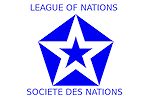
Die Gesundheitsorganisation des Völkerbunds (League of Nations Health Organisation - LNHO) eröffnet in Singapur ein Far Eastern Bureau. Siam trägt zu dessen Finanzierung jährlich 2.500 Baht bei.
"THE EASTERN BUREAU AT SINGAPORE To assist the fight against epidemics in the East, from where they often spread to other parts of the world, the League
has created a Bureau of Epidemiological Information at Singapore. This Bureau receives telegraphic intelligence with regard to plague, Cholera, and smallpox in particular, from 140 ports, some of which are shown on the map. Such information is communicated by wireless and cable to all the sanitary services in the area served by the Bureau. This and other information, received directly, is distributed weekly by Geneva throughout Europe.The Eastern Bureau at Singapore is also the agent in the East of all the activities of the Health O
rganisation.
Abb.: The Eastern Bureau at SingaporeINTERCHANGE OF HEALTH PERSONNEL
In order to study the public health administration and methods of various countries and to bring Health Officers into closer touch, The League of Nations has organised exchanges and study tours in different countries."
1925
Abb.: Sonkhla / Singora (สงขลา) aus dem Flugzeug, 1925
Abb.: Lage von Sonkhla / Singora (สงขลา)
[Bildquelle: OpenStreetMap. -- Creative Commons Lizenz (Namensnennung, share alike)]
1925

Fertigstellung des Witthayu-Palasts (วังวิทยุ) in Bangkok für Rangsit Prayurasakdi, Prinz von Chainat (สมเด็จพระเจ้าบรมวงศ์เธอ พระองค์เจ้ารังสิตประยูรศักดิ์ กรมพระยาชัยนาทนเรนทร, 1885 - 1951). Architekt: Charles Berger Lang.
Abb.: Lage des Witthayu-Palasts (วังวิทยุ)
[Bildquelle: OpenStreetMap. -- Creative Commons Lizenz (Namensnennung, share alike)]
Abb.: Witthayu-Palasts (วังวิทยุ), Bangkok
[Bildquelle: ©Google earth. -- Zugriff am 2012-03-28]<
1925
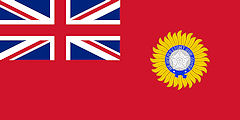
In Siam gibt es folgende Indian Associations:
Vishnu Mandir (विष्णु मन्दिर)
Arya Samaj (आर्य समाज)
Sri Maha Mariamman Temple (วัดพระศรีมหาอุมาเทวี / மாரியம்மன்)
Sri Guru Singh Sabha
Gurdwara Sangat
Jamiat ul Islam
Hindu Sabha
1925
Es gibt 48 chinesischsprachige Schulen in Siam.
1925/1926

Siam importiert aus dem Deutschen Reich Sprengstoff und Munition im Wert von 64.000 Baht. Damit steht Deutschland an erster Stelle der Importeure. An erster Stelle der Importeure steht Deutschland auch bei
Messerschmiedewaren (237.000 Baht)
Antriebmaschinen für Reismühlen
Lampen und Lampenteilen
Gold- und Silberschmiedearbeiten
Anilinfarben
Seidenwaren
Bier
An zweiter Stelle der Importeure steht Deutschland bei
Elektrowaren und Apparate
Uhren und Uhrenteile
Antriebsmaschinen
Papier
Eine starke Steigerung der Importe in Siam erzielt deutschland bei
wissenschaftlichen Instrumenten und Apparaten
Parfümerien und Kosmetika
Werkzeugen
Eisenbahn- und Straßenbahnwagen (444.000 Baht)
ca. 1925
Frau Hiang (เฮียง) beginnt mit der Produktion des Duftwassers Nang Loi (นางลอย). Das Rezept hat sie von einer Freundin erhalten, die im Königspalast arbeitet. Das Duftwasser wird zu einem Erfolg und wird besonders an Songkran (สงกรานต์) verwendet.
Abb.: Nang Loi (นางลอย)
[Fair use]
1925
Singapur: Gründung der South Seas Communist Party (aka Nanyang Communist Party - 南洋共产党) für Südostasien. Sie wird ab 1930 durch nationale kommunistische Parteien ersetzt.
1925
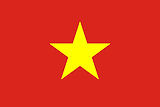
Einige Mitglieder der Việt Nam Thanh Niên Kách Mệnh Hội (Vietnamese Revolutionary Youth Association) werden nach Siam geschickt, um unter den hier lebenden Vietnamesen nationalistische Propaganda und organisatorische Arbeit zu leisten.
1925
Siam tritt der Fédération Internationale de Football Association (FIFA) bei.
Abb.: ®Logo
[Bildquelel: Wikimedia]
1925
Phu wiset (ผู้วิเศษ) Rebellion bei Saraburi (สระบุรี):
Abb.: Lage von Saraburi (สระบุรี)
[Bildquelle: OpenStreetMap. -- Creative Commons Lizenz (Namensnennung, share alike)]
"The phu wiset [ผู้วิเศษ] ‘rebellion’ near Saraburi [สระบุรี], north of Bangkok, late in 1925 was a minor affair, in which the phu wiset and his handful of followers were soon killed or dispersed by the Thai authorities. The leader of the ' rebellion, known in the government accounts as ‘Ai Kan,’ had a criminal record and a history of strange behavior, was a sometime monk, and also had pretensions to royal blood-all recurrent elements in the phu wiset tradition. What was new was the aim of the rebellion, which according to Ai Kan was to send a message to the king complaining that the Thai people were being oppressed by foreigners, particularly the British and the French, whom he held responsible for economic hardships, higher taxes, and the alleged abandonment of the Buddhist religion in favor of Christianity. Ai Kan then gave the king seven days in which to throw off foreign domination, failing which he would come deal with the situation himself." [Quelle: Batson, Benjamin Arthur <1942 - >: The end of the absolute monarchy in Siam. -- Singapore : Oxford Univ. Pr., 1984. -- 349 S. : Ill. ; 22 cm. -- (Southeast Asia publications series ; no. 10). -- ISBN 0-19-582612-4. -- S. 183, Anm. 31]
1925

Fertigstellung der Eisenbahnstrecke Moulmein (မတ်မလီု) - Ye (ဍုၚ်ရေဝ်). Sie ist Zubringer zum Säumerverkehr über den Drei-Pagoden-Pass (ด่านเจดีย์สามองค์) nach Kanchanaburi (กาญจนบุรี) in Siam
Abb.: Strecke Moulmein (မတ်မလီု) - Ye (ဍုၚ်ရေဝ်)
1925

Liebig's Sammelbilder:
Abb.: Alte Volksheiligtümer: die Buddhasteine der Siamesen (in Wirklichkeit handelt es sich um Burma!)
Abb.: Berühmte Diplomaten und Gesandte: Napoleon III. (1808 - 1873) empfängt eine siamesische Gesandtschaft (1861)
1925
Es erscheint:
Chan Sungsi Yananda [นาย ชาญ รังสิยานนท์] ; Luang Nonwakorn [หลวง บำรุง เนาวการณ์]: The Yao : a paper written ... in repy to the questionaire of the Siam Society = ประวัติชนชาติเย้า / translated by E. G. Sebastian. -- In: Journal of the Siam Society. -- vol. XIX, no. 2 (1925). -- S. 83 - 128
"Originally the writers thought that they would take a "Haw" [ฮ่อ] (Chinese) as an interpreter, because the latter can talk with the Yao [瑶族 / เย้า], but, as this statement was wanted as soon as possible, they could not wait to procure one and so had to go alone and talk Lao [ພາສາລາວ]. The language spoken by the "Yao" is not easy to understand until one gets the general sense-each individual expression is difficult, Some words could not be understood at all, and therefore the answers are not complete according to the questionnaire of the Siam Society. If there is any question to which no answer appears in this paper, it must be realised that the answer was impossible to obtain for the reasons given above." [a.a.O., S. 83]
1925
Es erscheint:
แบบเรียนภูมิศาสตร์ : ภูมิศาสตร์ประเทศสยาม [Lehrbuch der Geographie : Geographie Siams]. -- กรุงเทพฯ : กรมตำรา, 2468 [= 1925]
"Moreover, the subject of the lost territories can be found in another geography textbook on Siam published in 1925 by the Department of Textbooks. Despite its title, Geography Textbook, this book did not focus exclusively on Siam’s geography; it served, too, as a general introduction to various aspects of Siam, including religion, culture, language and history. In several parts of the book, the issue of the lost territories figures as an intrinsic feature of the knowledge about Siam passed on to the students. In the section dealing with the different administrative parts of Siam, for example, several references are made to how neighbouring territories now under foreign rule ‘used to be Thai’ (tae doem pen khong thai) or 'used to be under Thai rule’ (tae doem yu nai khwam pokhrong thai). Further, in the part dealing with the history of Siam the issue of the lost territories figures prominently. On the whole, this part of the textbook provides an outline of Siam’s history running as a straight spatial and chronological line from the historical centres of Sukhothai [สุโขทัย], Ayutthaya [อยุธยา], Thonburi [ธนบุรี] and Bangkok to the present. The making of this perception of Siam’s history can be traced back to the turn of the twentieth century and pointed up the emerging of a national history that went beyond dynastic history. When dealing with the territorial fortunes of Siam in the Thonburi and Bangkok periods, the Geography Textbook presents a picture of a fluctuating Siam, in which the knowledge about the loss of the territories emerges. It associates the reigns of King Taksin of Thonburi and King Phra Phuttayotfa [พระพุทธยอดฟ้าจุฬาโลก] of Bangkok (Rama I) with a steady process of territorial expansion, with the latter’s territorial control being more extensive than in any period’, including the territories east of the Mekong. However, that of one of his successors, King Chulalongkorn (Rama V.) [พระบาทสมเด็จพระปรมินทรมหาจุฬาลงกรณ์ พระจุลจอมเกล้าเจ้าอยู่หัว], appears as follows: "Siam had to withdraw the authority (thon amnat) [ถอนอำนาจ] it held over Cambodia and give it to France. In addition, France also requested Siam’s territory on the left-bank of the Mekong, claiming that this territory used to be a colony of Vietnam which now was a colony of France. The truth, however, is that the territory in question used to belong to Lao Vientiane [ວຽງຈັນ], which was a colony over which Siam held absolute rights (mueang khuen khong thai doi sithi khat)."
[Quelle: Ivarsson, Søren: Creating Laos : the making of a Lao space between Indochina and Siam, 1860-1945. -- Copenhagen : NIAS, 2008. -- 238 S. : Ill. ; 22 cm. -- (Nordic Institute of Asian Studies monograph series ; 112). -- ISBN 978-87-7694-023-2. -- S. 63f. -- Fair use]
1925

Der katholische Steyler Missionar (SVD) Paul Schebesta (1887 - 1967) veröffentlicht in der anthropologischen Zeitschrift "Man" eine Notiz über "The Sĕmangs of Patalung" [พัทลุง]. Er bezeichnet die Semang als "Urwaldzwerge", z. B. in folgenden Buchtiteln:
Bei den Urwaldzwergen von Malaya. Leipzig, Brockhaus, 1927
- Bei den Urwaldzwergen von Malaya. Leipzig, Brockhaus, 1927
- Orang - Utan. Bei den Urwaldmenschen Malayas und Sumatras. Leipzig,, F. A. Brockhaus Verlag,, 1928
- Die religiösen Anschauungen der Semang-Zwerge von Malaya (Hinterindien). Düsseldorf, Druck und Verlag von L. Schwann, 1928 (Religiöse Quellenschriften. Band: 52)
Heute leben noch einige Semang (Sakai) in der Nakhon Si Thammarat Range (ทิวเขานครศรีธรรมราช)
Abb.: Lage der Provinz Patalung (พัทลุง)
[Bildquelle: OpenStreetMap. -- Creative Commons Lizenz (Namensnennung, share alike)]
Abb.: Nakhon Si Thammarat Range (ทิวเขานครศรีธรรมราช)
[Bildquelle: ©Google earth. -- Zugriff am 2012-05-03]
Abb.: Einbandtitel, 1927
Abb.: Sakai, Batang Padang, Perak, British Malaya
[Bildquelle: Twentieth century impressions of British Malaya : its history, people, commerce, industries, and resources / ed. in chief: Arnold Wright. -- London [etc.] : Lloyds, 1908. -- S. 122]
Abb.: Sakai-Häuptling, Batang Padang, Perak, British Malaya
[Bildquelle: Twentieth century impressions of British Malaya : its history, people, commerce, industries, and resources / ed. in chief: Arnold Wright. -- London [etc.] : Lloyds, 1908. -- S. 122]
Abb.: Lage von Batang Padang, Perak, Malaysia
[Bildquelle: OpenStreetMap. -- Creative Commons Lizenz (Namensnennung, share alike)]
"Die Semang sind eine Ethnie auf der malaiischen Halbinsel im heutigen Malaysia. Die Tiefland-Stämme der Semang werden auch Sakai genannt. Die Semang sind kleiner gewachsen, dunkelhäutiger und kraushaariger als die Bevölkerungsmehrheit in Malaysia. Aufgrund dieser Merkmale werden sie zusammen mit weiteren Ethnien in Süd- und Südostasien, darunter den Mani in Südthailand, als „Negritos“ bezeichnet. Traditionell lebten sie vor allem im Inneren der Gebirge als Jäger und Sammler in den tropischen Regenwäldern. Die Semang sprechen heute Mon-Khmer-Sprachen, ursprünglich sollen sie jedoch eigene Sprachen gehabt haben, von denen sich einige Elemente in ihrem Vokabular erhalten haben. Bis ins 19. Jahrhundert lebten Semang auch im Gebiet des heutigen Thailands. Zu dieser Zeit machten die Malaien Sklavenjagden auf die Semang."
[Quelle: http://de.wikipedia.org/wiki/Semang. -- Zugriff am 2012-05-03]
1925

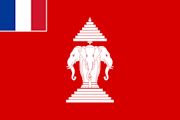
Es erscheint:
Atlas-geography of Siam : 28 lessons and readings = atlas-géographie du Siam : 28 leçons et lectures / S. G. -- Orne : Imprimerie de Montligeon, 1925. -- 113 S. : Ill. ; 33 cm
Abb.: Einbandtitel
Abb.: Laos wird als Teil Annams gezeichnet
[Bildquelle: Ivarsson, Søren: Creating Laos : the making of a Lao space between Indochina and Siam, 1860-1945. -- Copenhagen : NIAS, 2008. -- 238 S. : Ill. ; 22 cm. -- (Nordic Institute of Asian Studies monograph series ; 112). -- ISBN 978-87-7694-023-2. -- S. 69]
1925

Abb.: Reklame für Ovaltine (โวัลติน = Ovomaltine), 1925
1925

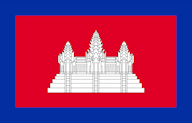
Es erscheint der Kambodscha-Roman:
Groslier, George <1887 - 1945>: La route du plus fort. -- Paris : Emile-Paul, 1925. -- 236 S.
Abb.: Titelblatt
1925

Abb.: Ein früher Pick-up: 1925 Ford Model T Woody Pickup, 2010
[Bildquelle: Bill Barber. -- http://www.flickr.com/photos/21861018@N00/5060207360. -- Zugriff am 2013-10-12. -- Creative Commons Lizenz (Namensnennung, keine kommerzielle Nutzung)]
Abb.: Songthaew-Pickup (สองแถว), Chiang Mai (เชียงใหม่), 2007
[Bildquelle: This user loves Krittaya / Wikimedia. -- Public domain]
1925

Eröffnung von Route Coloniale No 7. Dadurch soll Laos von Siam entfernt und an französisch Indochina angebunden werden. Die Straße ist in der Regenzeit nicht befahrbar.
Abb.: Lage von Route Coloniale No 7
1925


Der französische Kolonialbeamte Jean Marquet <1883 - 1954> berichtet in der Zeitschrift Le monde coloniale illustré über eine Reise nach Laos auf Route Coloniale No 8 (s. Vorhergehendes):
"The Annamese [Vietnamese], who are marvellous colonisers, have begun to invade Laos. There are already 3,000 of them in Vientiane [ວຽງຈັນ]. Placed before them, the Laotians, gentler and less organised, have drawn away. The Annamese [Vietnamese] peddler wrests or buys up everything he can in the most remote of places. Despite the wild animals, some of them make 15-day road trips to bring back to the Delta a sow and her piglets, whipping them along the way. Soon, thanks to trucks the Annamese [Vietnamese] will push the Laotians into the unhealthy forests." "Very mild temperatures, the great silence of mountainous banks and the 'susu’ peace of gentle and happy Laos. For the Laotians are perfect beings, on one condition: that you do not ask them to work! This country is horrified by [physical] exertion like a mad dog is by water. And this leads us into a terrible blind-alley: either doing nothing in order to conserve the Laotian or developing the country and the Laotians will disappear. They have already fled Vientiane;
3,000 Annamese [Vietnamese] have replaced them. They [the Laotians] increasingly abandon Luang Prabang [ຫຼວງພະບາງ], whose population has decreased by half over the last ten years. On the other hand 400 Annamese [Vietnamese] have now settled in and work there. The development of this country, whose potential is nonetheless enormous, cannot be done without the Annamese [Vietnamese] race. Without considering this saving fact and until it happens, Laos will continue to be what it is, to use the words of the late [Joost van] Van Vollenhoven [1877 - 1918]: a blister on the foot of the peasants from Annam."
[Übersetzung: Ivarsson, Søren: Creating Laos : the making of a Lao space between Indochina and Siam, 1860-1945. -- Copenhagen : NIAS, 2008. -- 238 S. : Ill. ; 22 cm. -- (Nordic Institute of Asian Studies monograph series ; 112). -- ISBN 978-87-7694-023-2. -- S. 105f.]
1925


In den USA erscheint und wird ein Bestseller:
Barton, Bruce <1886 - 1967>: The Man Nobody Knows : a Discovery of the Real Jesus. -- Indianapolis : Bobbs-Merrill, 1925. -- 219 S. ; 21 cm.
Jesus ist der größte business executive (CEO) der Welt, who "picked up twelve men from the bottom ranks of business and forged them into an organization that conquered the world".
Abb.: Inserat
1915-04-04
"Perspectiva" in Bangkok Times:
"The principal governmental shortcoming in the economic sphere, according to the critics, was its lack of attention to the development of Siam's main resources. Above all, the government was faulted for doing little to improve the Thai rice industry; the Thai rice farmer, said Perspectiva, is "getting poorer and poorer every year ... if we cannot tackle this question of the rice industry and put it on an efficient basis then there is no hope for us." Government efforts at economic development were regarded as misdirected; for example, said Perspectiva: "The cities of Siam are all trying to subscribe to aeroplanes and making flying grounds, while fundamentals like drains, water supplies, hospitals and streets are forgotten."
In the administrative sphere innumerable shortcomings were identified. The bureaucracy was termed too big, unwieldy, inefficient, graft-ridden, self-serving. It needed drastic pruning; it needed "a cold, common-sense, business-like programme, and the will to carry it through.""
[Bangkok Times. -- 1925-04-04. -- In: Vella, Walter F. <1924 - 1980>: Chayo! : King Vajiravudh and the development of Thai nationalism / Walter F. Vella, assisted by Dorothy B. Vella. -- Honolulu : Univ. Press, 1978. -- 347 S. : Ill. ; 25 cm. -- ISBN 0-8248-0493-7. -- S. 266f.]
1925-04-14
Karikatur über das Wegsehen der Polizei bei Bordellen, in der Zeitung Sayam rat (สยามรัฐ):
Abb.: Die Polizei schaut weg
[Bildquelle: Barmé (2002), S. 111]
1925-04-18

Kambodscha: Bauern von Kraang Laev erschlagen Louis Bardez (1882 - 1925), den französischen résident der Provinz Kampong Chhnang (កំពង់ឆ្នាំង). Bardez hatte versucht, überfällige Steuern einzutreiben.
1925-04-28

Großbritannien kehrt wieder zum Goldstandard zurück, den es 1919 suspendiert hat.
1925-05-02

Karikatur des Königs als DämonThotsian (ทศเศียร - Zehnköpfiger) (= Thotsakan (ทศกัณฐ์) = daśakaṇṭha (Zehnhalsiger) = Rāvaṇa), in der Zeitung Sayam rat (สยามรัฐ):
Abb.: Thotsian (ทศเศียร), einige seiner Laster: Schürzenjäger, Prostitution, Glücksspiel ...
[Bildquelle: Barmé (2002), S. 115]
Abb.: Briefmarke mit dem Bildnis Ramas VI.
[Bildquelle: Wikipedia. -- Public domain]
1925-05-11

Der britische Gesandte Robert Hyde Greg (1876-1953) an den den US-Berater für Außenpolitik Francis Bowes Sayre (1885 - 1972), der in Europa gleichberechtigte Verträge aushandelt:
". . a rather serious financial crisis here and a certain governmental incoherence which has become increasingly marked since Prince Devawongse’s [สมเด็จพระเจ้าบรมวงศ์เธอ กรม พระยาเทวะวงศ์วโรปการ, 1858 - 1923] death removed one who was virtually if not technically Prime Minister." [Zitiert in: Batson, Benjamin Arthur <1942 - >: The end of the absolute monarchy in Siam. -- Singapore : Oxford Univ. Pr., 1984. -- 349 S. : Ill. ; 22 cm. -- (Southeast Asia publications series ; no. 10). -- ISBN 0-19-582612-4. -- S. 23, Anm. 36]
1925-05-21

Bericht von Robert Hyde Greg (1876-1953) an das britische Foreign Office über eine Krisensitzung des Ministerratswegen der finanziellen Misere Siams:
"He [Nakhon Sawan] [Prinz Paribatra Sukhumbandh - สมเด็จพระเจ้าบรมวงศ์เธอ เจ้าฟ้าบริพัตรสุขุมพันธุ์ กรมพระนครสวรรค์วรพินิต, 1881 - 1944] then opened out on the King’s extravaganzas, and said that the sums expended on the King’s comforts and on the maintenance of Royal dignity were out of all proportion to the revenue of the country. From time to time he turned to the secretary who was taking notes on the proceedings, and instructed him to take down all that he was saying, so that nothing could escape the King’s notice." [Zitiert in: Greene, Stephen Lyon Wakeman: Absolute dreams : Thai government under Rama VI, 1910-1925. -- Bangkok : White Lotus, 1999. -- 224 S. ; 22 cm. -- ISBN 974-8434-69-9. -- S. 166]
1925-05-27

Bericht von Robert Hyde Greg (1876-1953) an das britische Foreign Office über ein Gespräch des britischen Finanzberaters, Sir Edward Cook, mit Prinz Damrong Rajanubhab (สมเด็จพระเจ้าบรมวงศ์เธอ พระองค์เจ้าดิศวรกุมาร กรมพระยาดำรงราชานุภาพ, 1862 -1943):
"He [Damrong] expatiated at some length on the suitability of Absolute Monarchy for a country in the phase of development that Siam is today. He added, however, significantly that obviously the personality of the autocrat counted for much. While clearly deprecating the pass things had come to, Sir Edward gained the impression that, though Prince Damrong would support the party of reform up to a point, he was from his age and by inclination a conservative with the deep respect for the King as King which characterizes the older generation of this country." [Zitiert in: Greene, Stephen Lyon Wakeman: Absolute dreams : Thai government under Rama VI, 1910-1925. -- Bangkok : White Lotus, 1999. -- 224 S. ; 22 cm. -- ISBN 974-8434-69-9. -- S. 167]
Robert Hyde Greg (1876-1953) berichtet auch, dass man allseits dagegen ist, das Staatsdefizit durch höhere Steuern zu beheben: höhere Staatseinnahmen würden nur dazu führen, dass der König noch mehr Geld für seine "unworthy favorites" verschwenden würde.
1925-05-30
Shanghai International Settlement (上海公共租界 / Concession Internationale de Changhai / Internationale Konzession von Shanghai / Шанхайский международный сеттльмент / Shanghai International Afregning / Insediamento Internazionale di Shanghai aka Concessione Internazionale di Shanghai / Liquidação Internacional de Xangai / Internationale Concessie van Shanghai / Acuerdo internacional de Shangai / Shanghais internationella Avräkning / Shanghai Internasjonale Oppgjør): Die internationale (vorwiegend von Briten geführte) Shanghai Municipal Police (上海公共租界巡捕房) schießt auf demonstrierende Studenten der anti-imperialistischen Bewegung des 30. Mai (五卅運動): 9 Studenten werden getötet.
Die Chinesen Siams unterstützen das daraufhin entstehende anti-britische May Thirtieth Movement (五卅運動). Die Regierung Siams verbietet daraufhin mehrere chinesische Zeitungfen, die zur Unterstützung der Protestbewegung aufgerufen haben.
Abb.: Chinesisches anti-imperialistisches Plakat, 1925
[Bildquelle: Wikipedia. -- Public domain]
1925-06

In Berlin trifft Prinz Damras Damrong Devakula (หม่อมเจ้าดำรัสดำรงค์ เทวกุล, 1881 - 1944) als erster Gesandter Siams nach dem Weltkrieg ein.
1925-06


Memorandum des britischen Finanzberaters Sir Edward Cook (1881–1955):
"That H. M. [His Majesty] be humbly advised that the interests of H. M. and of the country require a close adherence to the principle under which all expenditure on the Royal Household and Court is kept separate from the ordinary expenditure of the State and is defrayed entirely from the lump provision for the Civil List." [Zitiert in: Batson, Benjamin Arthur <1942 - >: The end of the absolute monarchy in Siam. -- Singapore : Oxford Univ. Pr., 1984. -- 349 S. : Ill. ; 22 cm. -- (Southeast Asia publications series ; no. 10). -- ISBN 0-19-582612-4. -- S. 18]
1925-06-01


Der britische Finanzberater Sir Edward Cook (1881–1955) übergibt dem Finanzminister ein Memorandum "Observations upon the present financial position of Siam":
"Beginning with the assertion that ‘Siam is living beyond her means’, Sir Edward pointed out how expenditures had risen dramatically in preceding years, and the consequent depletion of reserves, which left Siam with the prospect of soon being forced to raid currency reserves, ‘the last refuge of bankrupt governments’, which ‘would reduce Siam in prestige and credit to the level of China’. Sir Edward argued that the cause of the crisis was rapidly rising expenditures, and particularly expenditures of an unproductive nature. In tables, Siam’s defence and royal expenditures were compared with those of Japan, Denmark, the Netherlands, Spain and Norway; for defence the expenditures of those countries ranged from a low of 8.54 per cent of the total national budget to a high of 20.62 per cent, while for Siam the figure was 23.3 per cent; for royal expenditures the range was 0.13 per cent to 0.33 per cent, while for Siam the figure was 10.7 per cent. Noting that it was difficult to express an opinion on royal expenses, Sir Edward nevertheless observed that they were four times the amount spent on education and five times the amount spent on roads, and that, ‘If motives of delicacy were to be allowed to lead to the suppression or slurring over of this fact, an entirely false view of the country’s financial position, and of the way in which its resources are spent, would be obtained’. Furthermore, some items that should properly be included in royal expenditure were ‘tucked away’ in the regular budget, while other royal disbursements were disguised as ‘loans’ or ‘advances’." [Quelle: Batson, Benjamin Arthur <1942 - >: The end of the absolute monarchy in Siam. -- Singapore : Oxford Univ. Pr., 1984. -- 349 S. : Ill. ; 22 cm. -- (Southeast Asia publications series ; no. 10). -- ISBN 0-19-582612-4. -- S. 17f. -- Fair use]
1925-06-06

Hồ Chí Minh (1890 - 1969) gründet die Vietnam Revolutionary Youth League (HVNCMTN Hội Việt Nam Cách mạng Thanh niên, ursprünglich: Việt Nam Thanh niên Cách mạng Đồng chí Hội)
1925-06-08
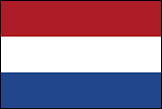
Unterzeichnung des Treaty of Friendship, Commerce and Navigation with the Netherlands, B.E. 2468 (1925 A.D.). Ratifiziert 1926-08-24, gültig bis 1936-08-24
1925-06-10
Karikatur über Männer mit Prostituierten, aus der Zeitung Bangkok kan-muang (บางกอกการเมือง):
Abb.: Männer mit Prostituierten
[Bildquelle: Barmé (2002), S. 81]
1925-06-12

Gesandtschaftsrat Zobel, der Vertreter des Deutschen Reichs in Siam, stirbt in Bangkok an Hitzschlag.
1925-06-13
Bangkok Times: "Democracy again" über die Länder Asiens unter Kolonialherrschaft:
"Give them their independence, and they will return to despotism of the old Oriental pattern." [Zitiert in: Batson, Benjamin Arthur <1942 - >: The end of the absolute monarchy in Siam. -- Singapore : Oxford Univ. Pr., 1984. -- 349 S. : Ill. ; 22 cm. -- (Southeast Asia publications series ; no. 10). -- ISBN 0-19-582612-4. -- S. 177]
1925-06-17 - 1925-08-14 ; 1925- 11-04 - 1926 -02-24


Es erscheint die antikoloniale Tageszeitung
L’Indochine : Journal quotidien de rapprochement franco-annamite <Saigon> / hrsg. von Paul Monin <1890 - 1929> und André Malraux <1901 - 1976>. -- 1 (1925-06-17) - 49 (1925-08-14).
Der Vertrieb der Zeitung wird von den Kolonialbehörden behindert. Sie wird fortgesetzt mit:
L’Indochine enchaînée <Saigon> / hrsg. von Paul Monin <1890 - 1929> und André Malraux <1901 - 1976>. -- 1(1925-11-04) - 23 (1926-02-24)
"Paul Monin, est né le , à Couzon-au-Mont-d'Or, près de Lyon en France. Il est avocat en Indochine de 1918 jusqu'à sa mort, le à Saïgon (Hô-Chi-Minh-Ville). Avec André Malraux (1901 - 1976), en 1925, il crée, à Saïgon, le journal de défense des droits démocratiques des Annamites, L'Indochine qui devient deux mois plus tard L'Indochine enchaînée Après le retour d'André Malraux en Europe, Paul Monin se rend en Chine pour se mettre au service de la révolution chinoise. Revenu en Indochine, il consacre ses efforts à soutenir la revendication de l'indépendance immédiate du Vietnam.
Biographie Les débuts en IndochineEn janvier 1918, à 27 ans, Paul Monin part en Indochine avec sa femme Gertrude qu'il a épousée en 1913, et son fils Willy âgé de trois ans.Il s'associe d'abord avec un avocat de Saigon, Maître Thiollier. Puis, il monte sa propre étude qui ne tarde pas à prospérer.Dans sa clientèle, il compte des Annamites de condition très modeste pour lesquels il intervient souvent sans exiger de rétributions. Il s'indigne vite de voir que les indigènes subissent des condamnations bien plus lourdes que les Européens pour les mêmes délits.
De l'extrême droite nationaliste au réformisme libéralPourtant Paul Monin vient d'une mouvance politique qui s'apparente à l'extrême droite. Le journal qu'il fait paraître en février 1919, La Grenade, reprend la plupart des thèmes nationalistes de L'Action française. Il approuve ainsi l'acquittement de Raoul Villain (1885 - 1936), l'assassin de Jean Jaurès (1849 - 1914), dont le procès a lieu juste après la fin de la guerre1. Il dénonce aussi Joseph Caillaux (1863-1944) pour avoir souhaité une paix de compromis avec l'Allemagne. Mais Monin est un "honnête homme", comme dira de lui plus tard Marius Moutet (1876 - 1968). Devant les abus les plus criants de la colonisation, il est contraint de réviser sa conception de la politique. Dès le mois de décembre 1919, il cesse de faire paraître La Grenade qu'il remplace par un nouveau titre, La Vérité, dans laquelle on constate une évolution nette vers des positions plus libérales. Peu à peu, Paul Monin se lie avec les milieux réformistes de la bourgeoisie vietnamienne, et spécialement avec le directeur de L'écho annamite, Nguyen Phan Long. Monin milite alors pour l'octroi des droits démocratiques dont sont privés les indigènes : liberté de la presse, liberté de réunion, liberté de circuler comme les Français. Il est connu désormais pour être "l'avocat, ami des Annamites".
Un acteur de la politique saïgonnaisePaul Monin, après avoir échoué aux élections législatives de novembre 1919 contre le député sortant de Cochinchine, Ernest Outrey (1863 - 1941), réussit à se faire élire en 1922 au Conseil colonial de Cochinchine, instance délibérative sans grand pouvoir décisionnel. En 1923, avec ses amis Vietnamiens, il dénonce le projet d'instauration d'un monopole des transport du riz défendu par un certain Candelier. Il reçoit à cette occasion le soutien de son ami le journaliste Alfred-Ernest Babut (1878 - 1962).
Attaquant avec audace et sans doute outrance le gouverneur de la Cochinchine Maurice Cognacq (1870 - 1949), le 20 juin 1923 Monin fait l'objet d'une sanction de suspension de ses fonctions d'avocat-défenseur. Ne supportant pas ce qu'il considère comme une injustice, Monin présente sa démission. Désormais Monin ne peut plus plaider3. Mais il continue d'apporter son soutien juridique à ceux qu'il veut défendre en s'installant comme avocat-consultant.
La rencontre avec Malraux et la création du journal L'IndochineEn juillet 1924, sur le paquebot L'Angers qui l'amène en France pour une mission ponctuelle, il fait la connaissance de Clara Malraux (1897 - 1982). Elle a bénéficié d'un non-lieu dans l'affaire du vol des statues d'Angkor, car selon la loi de l'époque une femme doit suivre son mari et n'a pas de responsabilité propre dans ce genre d'action. Monin est intéressé par cette femme brillante qui lui recommande de prendre contact avec son mari à son retour à Saigon. Ce qu'il fait lorsqu'il revient en Indochine le 15 octobre. Durant deux semaines, avant qu'André Malraux - qui bénéficie, dans le jugement en appel à Saïgon, du sursis et d'une réduction de peine - ne parte à son tour pour la France, Malraux et Monin se voient et envisagent de faire paraître un journal de défense des intérêts annamites.
Malraux étant parti, Monin qui n'est pas totalement convaincu de son retour, s'associe avec un journaliste, membre comme lui de la section locale du parti radical socialiste, Hippolyte Ardin, pour créer un nouveau journal, Saigon républicain. Dès le retour des Malraux en Indochine, en mars 1925, Monin rompt avec Ardin et décide de s'associer à Malraux pour faire paraître L'Indochine. Le journal n'est nullement l'organe du parti Jeune Annam, groupe qui ne se créera véritablement qu'au début de 1926 et qui n'aura qu'une influence limitée en Indochine. Mais les deux directeurs veulent associer à leurs efforts des Vietnamiens. Ils ne parviennent pas à convaincre Nguyen Phan Long de les rejoindre, mais un de ses amis, le jeune métis Eugène Dejean de la Bâtie (1898 - 1946), accepte quelques semaines de faire partie de leur rédaction. Il les quittera pourtant pour rejoindre La Cloche fêlée, le journal d'un ami de Monin, Nguyen An Ninh. Quelques jeunes journalistes vietnamiens sans grand expérience viennent grossir leurs rangs. Monin aurait voulu faire paraître un journal en vietnamien qui aurait été le double de L'Indochine. Mais Malraux qu'il a envoyé rencontrer le gouverneur général de l'Indochine n'obtient pas l'autorisation nécessaire5. L'Indochine se veut un organe de combat. Monin et Malraux ne limiteront pas leurs coups. Même si le journal ne réclame nullement l'indépendance du Vietnam, il défend les indigènes contre les abus les plus criants de la colonisation. L'Indochine frappe fort les pouvoirs en place en Cochinchine et d'abord le gouverneur Cognacq. Le ton des articles atteint une virulence qui suscite de vives réactions des autorités et de la presse coloniale.
Disparition de L'Indochine remplacée par L'Indochine enchaînéeLe pouvoir colonial ne peut interdire L'Indochine mais il fait tout pour limiter sa diffusion et rendre difficile son impression. Les exemplaires sont volés, les vendeurs intimidés. L'imprimeur Louis Minh, soumis à de fortes pressions, refuse de poursuivre l'impression du journal. Le 14 août 1925, L'Indochine cesse de paraître. Monin n'accompagne pas Malraux lorsque celui-ci part avec Clara pour Hong Kong à la fin du mois d'août pour acheter des caractères d'imprimerie qu'ils ne peuvent trouver à Saigon. L'Indochine enchaînée prend la suite de L'Indochine à partir de novembre. Mais Monin est en proie à des graves difficultés : il est déclaré en faillite dans une histoire compliquée où il est accusé d'avoir été le gérant de fait d'un restaurant qui a fait faillite, Le Petit Tabarin. Il se rend compte également que Malraux se lasse de cette aventure indochinoise et qu'il songe à retourner en Europe. Malraux part en effet avec Clara au début de 1926. L'Indochine enchaînée cesse de paraître en février 1926.
Le voyage de Paul Monin en ChinePaul Monin a essayé d'entraîner André Malraux en Chine, mais il s'est rendu compte assez vite de l'inanité de ses efforts. Il décide donc de rejoindre seul, Canton, bastion de la Chine révolutionnaire. Il part de Saigon, avec sa femme Gertrude, le 3 mars 19266. À Canton, Paul Monin ne parviendra pas à rencontrer le chef des conseillers soviétiques auprès du gouvernement chinois révolutionnaire, Borodine, ce personnage mythique que tous les journalistes occidentaux de l'époque tentent en vain d'interviewer et dont Malraux fera un portrait déformé dans Les conquérants. Mais Paul Monin entre en contact avec le futur Hô Chi Minh (1890 - 1969) qui, sous le nom de Li-Thuy, sert alors de secrétaire-interprète à Mikhaïl Borodine (Михаил Маркович Бородин, 1884 - 1951). Bien que Ho ne le mette pas au fait de l'organisation clandestine qu'il est en train de forger, Monin comprend à son contact que le seul combat qu'il doit désormais soutenir est celui de l'indépendance du Vietnam. Monin retournera à Canton en juillet 1927 avec une jeune journaliste, Simone Tery, la fille de Gustave Téry et d'Andrée Viollis7.
Les derniers momentsMonin consacre la fin de 1927 et le début de 1928 à défendre ses amis vietnamiens persécutés dans leur combat pour l'indépendance de leur pays. Revenu quelques mois en France, il repart en Indochine sans sa femme Gertrude, mais en emmenant son fils Willy.
Il meurt d'une forme pernicieuse de paludisme en janvier 1929. Son cortège funèbre est suivi par des milliers de Vietnamiens."
[Quelle: https://fr.wikipedia.org/wiki/Paul_Monin. -- Zugriff am 2016-11-25]
1925-06-21

Nguyễn Ái Quốc (aka. Hồ Chí Minh, 1890 - 1969) gründet in Kanton (廣州) die Vietnamese Revolutionary Youth League (Việt Nam Thanh Niên Cách Mệnh Đồng Chí Hội / 越南革命青年同志会 Kurzform: Thanh Nien)
"Vietnamese Revolutionary Youth League (Vietnamese: Việt Nam Thanh Niên Cách Mệnh Đồng Chí Hội; Chinese: 越南革命青年同志会), or short for Thanh Nien, was founded by Nguyen Ai Quoc (best known as Ho Chi Minh, 1890 - 1969) in Guangzhou (廣州) in the spring of 1925.[1] It is considered as the “first truly Marxist organization in Indochina”[2] and “the beginning of Vietnamese Communism”.[3] With the support of Chinese Communist Party ( 中國共產黨) and the Kuomingtang (中國國民黨) Left, during the period of 1925-1927, the League managed to educate and train a considerable number of Marxist-Leninist revolutionaries, preparing the prominent leadership for the Communist Party of Vietnam (Đảng Cộng sản Việt Nam) and the Vietnamese Revolution (Cách mạng tháng Tám)." [Quelle: https://en.wikipedia.org/wiki/Vietnamese_Revolutionary_Youth_League. -- Zugriff am 2016-05-17]
1925-06-30

Rede Ramas VI. vor einer Gruppe Studenten, die zum Studium nach Europa abreisen:
"Finally, I beg to remind all of you students that we are Thai. Don't disparage your nation, for in doing so you are in effect disparaging yourselves. All peoples have both good and bad intermingled in their characters. There is no nation that is absolutely good or bad. There is much that is good in the Thai nation. We must nurture the merits and the good characteristics of our race and not let it be said that we are inferior and not the equals of others.... A nation without its own traditional culture is not regarded by outsiders as a nation at all. It is looked down upon by the world and is a subject of derision." [Übersetzt in: Vella, Walter F. <1924 - 1980>: Chayo! : King Vajiravudh and the development of Thai nationalism / Walter F. Vella, assisted by Dorothy B. Vella. -- Honolulu : Univ. Press, 1978. -- 347 S. : Ill. ; 25 cm. -- ISBN 0-8248-0493-7. -- S. 178f.]
1925-07-02
Zwei chinesischsprachige Zeitungen werden verboten, da sie aufrührerische Artikel gedruckt haben.
1925-07-04

In einer Kabinettssitzung betont Rama VI., dass er weiterhin als sein eigener Ministerpräsident handeln werde und dass die Budget-Kommission nur beratende Funktion hat. Er sei nicht bereit, sich beiseite schieben zu lassen wie der Mikado (御門, Kaiser) in Japan.
1925-07-11 - 1932-02

Rudolf Asmis (1879 - 1945) ist nach dem Krieg der erste außerordentlicher Gesandter und Ministre plénipotentiaire Deutschlands in Siam. Er ist in Siam sehr beliebt und es gelingt ihm, die Beziehungen zwischen Deutschland und Siam wieder auf das Vorkriegsniveau zu bringen.
Der deutsche Gesandte vertritt auch die diplomatischen und konsularischen Interessen der Türkei und Österreichs.
Er übergibt dem König am 1925-08-01 sein Beglaubigungsschreiben. Der König betont,
"dass die Deutschen es besonders gut verstünden, mit den Siamesen umzugehen, außerdem lernten sie die Sprache der Siamesen und wüssten sich ihr Vertrauen zu erwerben." [Zitiert in: Catthiyakorn Sasitharamas [คัททิยากร ศศิธรามาส]: Die deutsch-thailändischen Beziehungen in der Zeit der Weimarer Republik bis zum Ende des Zweiten Weltkriegs. -- Hamburg : Kovač, 2012. -- 346 S. ; 21 cm. -- (Schriftenreihe Schriften zur Geschichtsforschung des 20. Jahrhunderts ; Bd. 4). -- ISBN 978-3-8300-6361-2. -- Zugl.: Hamburg, Univ., Diss., 2012. -- S. 45]
"Rudolf Albert August Wilhelm Asmis (* 12. Juni 1879 in Mesekenhagen, Pommern; † 13. November 1945 in sowjetischer Haft[1]) war ein deutscher Jurist und Diplomat. Leben
Während seines Studiums wurde er Mitglied der Sängerverbindung Gotia Greifswald (im Sondershäuser Verband).[2] Asmis war ab 1900 Rechtsreferendar und vier Jahre später preußischer Gerichtsassessor. 1907 wurde er durch den Reichstag beauftragt, als Angehöriger des Reichskolonialamts die Stammesrechte in der deutschen Kolonie Togo zu dokumentieren [3] und war dort 1911 Bezirksamtmann. Er wechselte 1912 ins Auswärtige Amt und wurde Konsul in Belgisch-Kongo in Boma und auch für Französisch-Äquatorialafrika außer Gabun. Während des Ersten Weltkriegs war er bei der deutschen Besatzungsverwaltung im Generalgouvernement Belgien in Brüssel tätig. Nach Ende des Krieges war er Vortragender Rat im Reichsministerium des Innern, ab 1922 als deutscher Botschaftsrat in Tschita (Чита́, Fernöstliche Republik - Дальневосточная Республика, ДВР), danach in Moskau. 1924 war er ein Jahr lang Botschaftsrat in Peking, danach bis 1932 Gesandter in Bangkok, woraufhin er zum Generalkonsul 1. Klasse in Sydney ernannt wurde. Über seine Erlebnisse im Ausland schrieb er mehrere Bücher. Von Januar 1929 bis April 1932 war er Mitglied Deutschen Volkspartei, am 1. April 1938 nach Aufhebung der Mitglieder-Aufnahmesperre der NSDAP wurde er Mitglied der NSDAP.
Während des Zweiten Weltkrieges trat Asmis erneut in den diplomatischen Dienst ein. Gleichzeitig war er Leiter der Berliner Dienststelle des Kolonialpolitischen Amtes der NSDAP. Nach der Auflösung des Amtes wurde Asmis 1944 Leiter des Referats Pol.X des Auswärtigen Amtes, das für Afrika, Australien und Neuseeland sowie für Mandats- und Kolonialfragen zuständig war. Gleichzeitig war er Reichskommissar für die Kolonialgesellschaften."
[Quelle: http://de.wikipedia.org/wiki/Rudolf_Asmis. -- Zugriff am 2014-11-25]
1925-07-13

Unterzeichnung des Freundschafts- und Handelsvertrags mit Belgien. Ratifiziert 1926-03-25, gültig bis 1932-03-25.
1925-07-14

Unterzeichnung des General Treaty of Friendship with Great Britain, B.E. 2468 (1925 A.D.) und des Treaty of Commerce and Navigation with the Great Britain, B.E. 2468 (1925 A.D.). Ratifiziert 1926-03-30, gültig bis 1936-03-30
1925-07-18

Der Brite Frederick William Meredith meldet das Patent für einen Autopiloten an. Autopiloten werden eine Grundlage des Weltluftverkehrs.
Abb.: Aus der Patentschrift
1925-07-22

König Vajiravudh nimmt an einem großen Festessen anlässlich der Wiederkehr des Kriegseintrittstages Siams auf Seiten der Alliierten teil.
1925-07-23


Der britische Gesandte Robert Hyde Greg (1876-1953) an das Foreign Office:
"I feel that death [von Rama VI.] alone will ease the situation and I don't think he will be assassinated." [Zitiert in: Batson, Benjamin Arthur <1942 - >: The end of the absolute monarchy in Siam. -- Singapore : Oxford Univ. Pr., 1984. -- 349 S. : Ill. ; 22 cm. -- (Southeast Asia publications series ; no. 10). -- ISBN 0-19-582612-4. -- S. 24, Anm. 44]
"If the fellow [Rama VI.] shows any sign of coming to England, head him off, we don't want him here." [Zitiert in: Batson, Benjamin Arthur <1942 - >: The end of the absolute monarchy in Siam. -- Singapore : Oxford Univ. Pr., 1984. -- 349 S. : Ill. ; 22 cm. -- (Southeast Asia publications series ; no. 10). -- ISBN 0-19-582612-4. -- S. 69, Anm. 75]
1925-07-24


Der britische Gesandte Robert Hyde Greg (1876-1953) an das Foreign Office:
‘Whatever the King’s shortcomings may be, and all told his reign has been singularly unfortunate both for this Dynasty and country, he is fundamentally pro-British, probably more so than any other Prince of his generation." [Zitiert in: Batson, Benjamin Arthur <1942 - >: The end of the absolute monarchy in Siam. -- Singapore : Oxford Univ. Pr., 1984. -- 349 S. : Ill. ; 22 cm. -- (Southeast Asia publications series ; no. 10). -- ISBN 0-19-582612-4. -- S. 22, Anm. 23]
1925-08

Prof. Francis Bowes Sayre, Sr. (1885 - 1972), Siams außenpolitischer Berater, kann Rama VI. melden, dass alle ungleichen Verträge revidiert sind: "Siams complete autonomy is now regained."
1925-08

Rama VI. erkrankt an einer Bauchinfektion.
1925-08-03

Rama VI. hat 5 Mio. Baht Schulden. Er legt 184.000 Baht zur Schuldentilgung beiseite.
1925-08-03
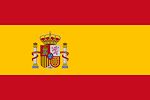
Unterzeichnung des Treaty of Friendship, Commerce and Navigation with the Spain, B.E. 2468 (1925 A.D.). Ratifiziert 1926-07-28, 6monatige Kündigungsfrist.
1925-08-06


Der britische Gesandte Robert Hyde Greg (1876-1953) an das Foreign Office:
"The King can hardly be more discredited than he now is, but no one seems disposed to take the strong measures necessary to terminate his rule, or rather absence of rule, and the efforts of the better class officials seem principally directed to using Sir Edward Cook as the lever by which the Court can not so much be got rid of but brought under something resembling financial control. I am more than ever inclined to think that no violent or revolutionary action will be taken and that unless the King were to die a natural death, things will drag on for some time much as they do to-day." [Zitiert in: Batson, Benjamin Arthur <1942 - >: The end of the absolute monarchy in Siam. -- Singapore : Oxford Univ. Pr., 1984. -- 349 S. : Ill. ; 22 cm. -- (Southeast Asia publications series ; no. 10). -- ISBN 0-19-582612-4. -- S. 18f.]
1925-08-08

Um die Schulden zu dämpfen, entlässt Rama VI. acht Palastbeamte, darunter 5 Polizisten.
1925-08-14

Unterzeichnung des Treaty of Friendship, Commerce and Navigation with Portugal, B.E. 2468 (1925 A.D.). Ratifizierung 1926-07-31, gültig bis 1936-08-30.
1925-09-01

Unterzeichnung des Treaty of Friendship, Commerce and Navigation with Denmark, B.E. 2468 (1925 A.D.). Ratifizierung 1926-03-13, gültig bis 1935-08-28
1925-09-07


Shanghai (上海, China): 20.000 Demonstranten, vorwiegend Studenten, werfen Steine auf britische Polizisten als Protest gegen britische und andere ausländische Konzessionen.
Abb.: Ausländerviertel in Shanghai (上海) 1875: rot: Franzosen, blau: Briten, orange: USA, (gelb: Chinesen) (Karte um 90° nach rechts gedreht)
[Bildquelle: Wikipedia. -- Public domain]
1925-09-16

Prinz Damras Damrong Devakula (หม่อมเจ้าดำรัสดำรงค์ เทวกุล, 1881 - 1944) überreicht dem Reichspräsidenten Paul Ludwig Hans Anton von Beneckendorff und von Hindenburg (1847 - 1934) sein Beglaubigungsschreiben als Gesandter Siams
Abb.: Paul Ludwig Hans Anton von Beneckendorff und von Hindenburg, 1930
[Bildquelle: Thomas Kees / Wikimedia. -- Creative Commons Lizenz (Namensnennung, share alike)]
1925-09-20


Geburt des späteren Königs Rama VIII., Ananda Mahidol (อานันทมหิดล) (1925 - 1946) in Heidelberg (Deutschland), wo sich sein Vater zur Behandlung einer Nierenerkrankung aufhält.
Abb.: Lage von Heidelberg
[Bildquelle: OpenStreetMap. -- Creative Commons Lizenz (Namensnennung, share alike)]
1925-10 - 1926-07
Letzte große Cholera-Epidemie in Siam vor dem Krieg (1943: Kriegsgefangene Japans). Über 1700 Tote.
"The last really serious cholera epidemic I remember in Bangkok came in the hot season of 1925. It had not been expected and it arrived entirely without warning. It came on a ship from Swatow [ 汕頭市], one of those British coasters that regularly brought thousands of destitute Chinese immigrants hopeful of working up from rickshaw coolie to wealthy rice miller. The first casualties included the British captain and the chief engineer, who both died on board. The ship of evil omen was then berthed at an outdated quarantine station under inefficient guard. During the night many a Chinese coolie swam ashore and made good his escape. And that was how this imported epidemic secured a hold on the city’s half-million inhabitants. Among the first stricken was the English chaplain’s wife, but she recovered. This time there were to be few European victims, for they drank the good water and were careful about their food. The same could not be said for the Siamese who all too frequently still continued to use the river as a sewer and at the same time a source of drinking water. When they felt thirsty they merely scooped up water from over the sides of their houseboats with a half-coconut shell. However, even for the Siamese it was not so bad as the old nineteenth-century epidemics had been. Corpses that there was no time to burn were stacked up in the monasteries as before, but there were not so many of them as to be left to float about in the canals. People did not flee the city in a panic nor was the whole machinery of government brought to a standstill as it used to be. That was when there was no more effective way of causing the scourge to abate than the carrying about of sacred relics in procession and the forbidding of the slaughter of animals. The latter was a sin in the eyes of the Buddhists and might well have been the cause of the trouble.
Yet as of old I saw men fall down senseless in the streets as the cholera gripped them; and for months there were seldom less than fifty deaths a day from the disease in the city alone. True, there were hospitals now and the princes had given up their palaces as well for emergency use. The government tried to persuade the people to be innoculated and to boil their water. But there were many who refused to believe in the efficacy of the new methods. In matters that bordered so closely on affairs of the next world there was a terrible mental conflict between the old beliefs and the new-fangled Western healing that was apt to leave the peasant until too late in a dangerous state of indecision. But at least the Europeans took full advantage of their own inventions. No longer was the white population decimated as it had been a few years previously. The vaccine made the most fainthearted courageous too. No more were tales told of the white man who had eaten something that disagreed with him, as food so often did in those days, and then had died next morning, not of cholera but of fear.
In the course of my journeys upcountry I used to come across whole villages that had been entirely burned by order of the government as the only effective means of stopping the spread of that fearsome pest, the plague carrying rat. But such things are to be expected in unhygienic native villages. They scarcely offered a serious menace to the white man in his spacious well-kept bungalow. What I think better illustrates the shadow under which one used to live in the East is the fact that when I first went to Bangkok it used to be thought that for anyone to get appendicitis was the equivalent of a death sentence. Indeed, had the young man who was my predecessor in office not failed to recover from such an operation I might well have never set foot in Asia. He was just one of a number who dropped out in this quite unnecessary way in the early 1920’s. Some said the operating theater was always too hot, and indeed that was before the days of air conditioning. Others were of the opinion that the trouble was that Bangkok naturally did not attract the best surgeons. Certainly when a first-class Rockefeller man came out to study tropical medicine there was a sudden drop in the mortality of Europeans from appendicitis. That was because, though it formed no part of his duties, the Rockefeller man kindly consented to operate in such cases for purely humanitarian reasons."
[Quelle: Wales, H. G. Quaritch (Horace Geoffrey Quaritch) <1900 - 1981>: Years of blindness. -- New York : Crowell, 1943. -- 332 S. ; 22 cm. -- S. 60ff. -- Fair use]
1925-10

Der deutsche Gesandte Rudolf Asmis (1879 - 1945) gründet in Bangkok die Deutsche Vereinigung (aka. Deutscher Klub). Er umfasst 1930 fast alle Reichsdeutschen und Deutschstämmigen.
1925-10-10
Nationalfeiertag Chinas (國慶日/Double Tenth Day/雙十節). Die Chinesen Bangkok beflaggen:
ca. ein Fünftel mit der Flagge des Kuomintang (中國國民黨)
die Mehrheit mit der Flagge der nördlichen Warlords
1925-10-17

Wiedereröffnung des Generalkonsulats Siams in Hamburg.
1925-11-05

Rama VI. an Chao Phraya Yomarat [เจ้าพระยายมราช (ปั้น สุขุม), 1862 - 1938] über die geplante Lumphini Park (สวนลุมพินี) Exhibition zur Feier seines 15jährigen Regierungsjubiläums:
Abb.: Lage des Lumphini Park (สวนลุมพินี)
[Bildquelle: OpenStreetMap. -- Creative Commons Lizenz (Namensnennung, share alike)]
"It is quite satisfying for me to know that an exhibition will be held since I have desired to have one for a long time. Those who are opposed to it say that revenues will not cover expenditures. If you think only about the account books it can be seen that this is the case. However, when you are holding an exhibition you should think about the benefits other than monetary ones. That is, you have to think about the long-term benefits, which are:
- Siam still desires that foreigners become increasingly more familiar with the country. But if there is nothing for foreigners to think and talk about when will they ever get to know us? . . . You have to advertise your country to make people want to get to know it.
- An exhibition is a device to rouse us Thai people out of our ignorance of our own country. We have an economy here that should not embarrass anyone. We have an abundancy of goods that is equal to any country in the world ...
- The exhibition will be the means to urge foreigners to come to Siam and bring with them the benefits of today and tomorrow. People who visit us will bring money and they will leave some of it behind. People who come here will tell their families and friends about us which will make other people want to come. As for businessmen, when they learn about everything we have to offer they will think about doing business with us. All of this will bring money here in the future, which will help our country to develop."
[Übersetzung: Greene, Stephen Lyon Wakeman: Absolute dreams : Thai government under Rama VI, 1910-1925. -- Bangkok : White Lotus, 1999. -- 224 S. ; 22 cm. -- ISBN 974-8434-69-9. -- S. 169]
1925-11-22
Karikatur von Sem Sumanan über sich und den König Rama VI., im Periodikum Kro lek:
Abb.: Sem: "Here it is, that red-tailed fucking bastard number six." (Übersetzung: Barmé) - Der König. "Pass auf deinen Kopf auf!" / von Sem Sumanan
[Bildquelle: Barmé (2002), S. 118]
1925-11-24

36 Stunden vor Ramas VI. Tod gebiert ihm Prinzessin Suvadhana (สุวัทนา) seine Tochter Prinzessin Bejaratana Rajasuda Sirisobhabannavadi (สมเด็จพระเจ้าภคินีเธอ เจ้าฟ้าเพชรรัตนราชสุดา สิริโสภาพัณณวดี, 1925 - 2011). Sie ist das einzige legitime Kind Ramas VI. Da Rama VI. weibliche Thronfolge ausgeschlossen hat, kommt sie für die Thronfolge nicht in Frage.
Abb.: Prinzessin Suvadhana (สุวัทนา) mit Tochter Prinzessin Bejaratana Rajasuda Sirisobhabannavadi (สมเด็จพระเจ้าภคินีเธอ เจ้าฟ้าเพชรรัตนราชสุดา สิริโสภาพัณณวดี)
[Bildquelle: th.Wikipedia. -- Public domain]
"Princess Bejaratana Rajasuda Sirisobhabannavadi of Thailand (RTGS: Phetcharat Ratchasuda Sirisophaphannawadi; Thai: สมเด็จพระเจ้าภคินีเธอ เจ้าฟ้าเพชรรัตนราชสุดา สิริโสภาพัณณวดี; Thai pronunciation: [pʰêttɕʰarát râːttɕʰasùdāː sìrìsǒːpʰāːpʰānnāwâdiː], 24 November 1925 – 27 July 2011) was the only child of the King Vajiravudh of Thailand. She was a first cousin of King Bhumibol Adulyadej and third cousin of King Norodom Sihanouk of Cambodia.[2][3] Her funeral was held on April 9, 2012 at Sanam Luang ceremonial ground in Bangkok.[4][5][6]
BiographyPrincess Bejaratana was born on 24 November 1925 in the Royal Grand Palace, Bangkok, the only child of King Vajiravudh (Rama VI) and Princess Suvadhana (สุวัทนา, 1905 - 1985). After having seen his daughter one time, the King died the following day. Her uncle, who became King Prajadhipok (Rama VII), performed the naming ceremony for the princess on 30 December.
Princess Bejaratana and her mother moved to Suan Hongsa Villa in Dusit Palace, where she received her education from a private tutor. They moved in with Queen Sri Savarindira (สว่างวัฒนา, 1862 - 1955, the Queen Dowager) during World War II, and the princess attended Rajani School until she was 12. She and her mother then moved to England, where she continued her education and took medication for her poor health. She first stayed at Fairhill Villa in Surrey, before settling in Brighton.[7]
In November 1957, Princess Bejaratana returned f to Thailand. They bought land on Sukhumvit Road Soi 38, and build Ruenruedi Villa Palace. The princess proceeded to undertake her duties of representing the Royal Family. Her special interests were in education, public health, Buddhism, the soldiers aund police stationed at Thailand's borders, and general public's welfare.
Princess Bejaratana was known privately to be very gifted, especially with numbers. She could calculate the day of the week for any dates presented to her without any hesitation, and remembered the birthdays of all individuals who were presented to her.
Near the end of her life she had cut down on her Royal duties because of her age, but occasionally still did work relating to her royal father.
Princess Bejaratana died on 27 July 2011 at 4.37 pm at Siriraj Hospital, Bangkok aged 85.[8]
Titles and styles
- 30 December 1925 – 10 July 1935 : Her Royal Highness Princess Bejaratana Rajasuda.
- 10 July 1935 – 27 July 2011 : Her Royal Highness Princess Bejaratana Rajasuda, the Princess Cousin.
The Princess's style and title in full: Somdet Phrachao Bhakhinithoe Chaofa Bejaratana Rajasuda Sirisobhabannavadi (Thai: สมเด็จพระเจ้าภคินีเธอ เจ้าฟ้าเพชรรัตนราชสุดา สิริโสภาพัณณวดี) The word "Bhakhini" (Thai: ภคินี) is meaning Cousin."
[Quelle: http://en.wikipedia.org/wiki/Bejaratana. -- Zugriff am 2013-11-13]
1925-11-25

Tod von König Rama VI. (พระบาทสมเด็จพระปรเมนทรมหาวชิราวุธฯ พระมงกุฎเกล้าเจ้าอยู่หัว). Als Todesursachen werden genannt
- Diabetes
- Eingeweidebruch (Abdominalhernie)
- Magen-Darm-Kolik
Abb.: Rama VI.Rama VI. hinterlässt dank seiner Verschwendungssucht einen völlig ruinierten Staatshaushalt zurück. Er hinterlässt persönliche Schulden von 5,5 Mio. Baht + 4,6 Mio. Baht Schulden für Vorschusszahlungen durch die Staatskasse.
"On the day that King Vajiravudh died I put on my Scout insignia and stood for a long time in honor of the leader of our nation with a heart deep in sorrow . . . the whole Thai nation had lost its guiding national star." [Ein Pfadfinder (ลูกเสือ). -- Zitiert in: Vella, Walter F. <1924 - 1980>: Chayo! : King Vajiravudh and the development of Thai nationalism / Walter F. Vella, assisted by Dorothy B. Vella. -- Honolulu : Univ. Press, 1978. -- 347 S. : Ill. ; 25 cm. -- ISBN 0-8248-0493-7. -- Zugriff am 2013-11-23]
Eines der letzten Prestigeprojekte Ramas VI. war eine Siam Kingdom Exhibition. Zu diesem Zweck hat der König den Lumphini Park (สวนลุมพินี) gestiftet. Bei dieser Gelegenheit sollte die erste Asian Football Competition stattfinden. Fußballteams aus
- Rangoon (Britisch Burma)
- Colombo (Britisch Ceylon)
- Penang (britisch), Singapur (britisch)
- Saigon (Französisch Indochina)
- Hong Kong (britisch)
- Manila (Philippinen)
- Batavia (heute: Jakarta, Niederländisch Ostindien)
waren schon eingeladen.
Gleich nach Ramas VI. Tod wurde das Projekt Exhibition aus Kostengründen gestoppt.
Abb.: Lage des Lumphini Park (สวนลุมพินี)
[Bildquelle: OpenStreetMap. -- Creative Commons Lizenz (Namensnennung, share alike)]
1925-11-26


Der britische Gesandte Robert Hyde Greg (1876-1953) bezeichnet in einem Schreiben an das Foreign Office den Tod von Rama VI. als
"the best service the late King ever redered his people."
[Zitiert in: Batson, Benjamin Arthur <1942 - >: The end of the absolute monarchy in Siam. -- Singapore : Oxford Univ. Pr., 1984. -- 349 S. : Ill. ; 22 cm. -- (Southeast Asia publications series ; no. 10). -- ISBN 0-19-582612-4. -- S. 19]
ausführlich: http://www.payer.de/thailandchronik/ressourcen.htm
Vella, Walter F. <1924 - 1980>: Chayo! : King Vajiravudh and the development of Thai nationalism / Walter F. Vella, assisted by Dorothy B. Vella. -- Honolulu : Univ. Press, 1978. -- 347 S. : Ill. ; 25 cm. -- ISBN 0-8248-0493-7
Phongpaichit, Pasuk <ผาสุก พงษ์ไพจิตร, 1946 - > ; Baker, Chris <1948 - >: Thailand : economy and politics. -- Selangor : Oxford Univ. Pr., 1995. -- 449 S. ; 23 cm. -- ISBN 983-56-0024-4. -- Beste Geschichte des modernen Thailand.
Ingram, James C.: Economic change in Thailand 1850 - 1870. -- Stanford : Stanford Univ. Pr., 1971. -- 352 S. ; 23 cm. -- "A new edition of Economic change in Thailand since 1850 with two new chapters on developments since 1950". -- Grundlegend.
Akira, Suehiro [末廣昭] <1951 - >: Capital accumulation in Thailand 1855 - 1985. -- Tokyo : Centre for East Asian Cultural Studies, ©1989. -- 427 S. ; 23 cm. -- ISBN 4896561058. -- Grundlegend.
Skinner, William <1925 - 2008>: Chinese society in Thailand : an analytical history. -- Ithaca, NY : Cornell Univ. Press, 1957. -- 459 S. ; 24 cm. -- Grundlegend.
Mitchell, B. R. (Brian R.): International historical statistics : Africa and Asia. -- London : Macmillan, 1982. -- 761 S. ; 28 cm. -- ISBN 0-333-3163-0
Kludas, Arnold <1929 - >: Die Seeschiffe des Norddeutschen Lloyd 1857 bis 1970. -- Augsburg : Bechtermünz, 1998. -- 165 + 168 S. : Ill ; 28 cm. -- ISB 3-86047-262-3. -- Standardwerk.
Credner, Wilhelm <1892 - 1948>: Siam das Land der Tai : eine Landeskunde auf Grund eigner Reisen und Forschungen. -- Stuttgart : Engelhorn, 1935. -- 423 S. : Ill.
Bechert, Heinz <1932 - 2995>: Buddhismus, Staat und Gesellschaft in den Ländern des Theravāda-Buddhismus. -- Bd. 3: Bibliographie, Dokumente, Index. -- Wiesbaden : Harassowitz, ©1973. -- (Schriften des Instituts für Asienkunde in Hamburg ; XVII/3).
Barmé, Scot: Woman, man, Bangkok : love, sex, and popular culture in Thailand. -- Lanham : Rowman & Littlefield, 2002. -- 273 S. : Ill. ; 24 cm. -- ISBN 0-7425-0157-4
Zu Chronik Chronik B. E. 2468/2 = 1925-11 - 1926-3 (Rama VII.)